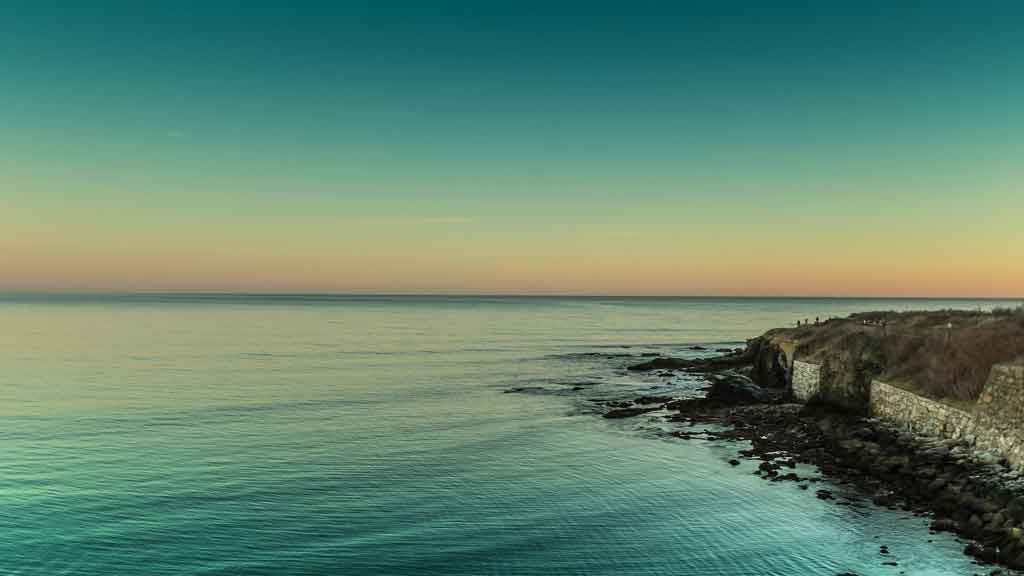Water moves continuously through the ocean in huge rivers called currents. Currents may flow on the surface of the ocean, where they are shallow, or they may flow far below the surface, where they are deeper.

Ocean currents are set in motion by the wind. The rotation of the earth moves them clockwise in the Northern Hemisphere and counter clockwise in the Southern Hemisphere.
In places where deeper currents flow below surface currents, the deeper ones flow in the opposite direction of the surface ones.
There are currents which flow along the Equator in each of the major oceans. These currents carry warm water.
But when these currents reach a continent, they split, with one current going north and the other going south. As the water gets farther and farther away from the Equator, it cools. So when it turns back to the Equator, either clockwise or counter clockwise, it becomes a cold current.
To see the path a current can take, we can look at the Gulf Stream. It begins in the warm waters of the Gulf of Mexico and passes through the Straits of Florida. It then flows in a northeasterly direction across the Atlantic Ocean towards Europe, often traveling as fast as 138 miles a day.
Once out in the ocean, the Gulf Stream breaks up into other currents: the North Atlantic Current, which turns north towards the British Isles and into the Arctic; the Canary Current, which turns south along the coast of Africa; and one part of the Gulf Stream, which turns south in the middle of the Atlantic, then west around the Sargasso Sea.
The Gulf Stream’s warm waters are responsible for keeping many northern European ports free of ice during that area’s cold winters.
Large ocean liners and tankers “ride” ocean currents to speed travel time.
